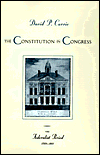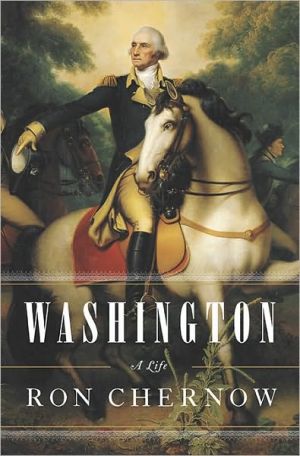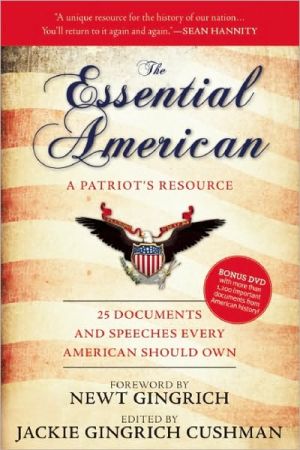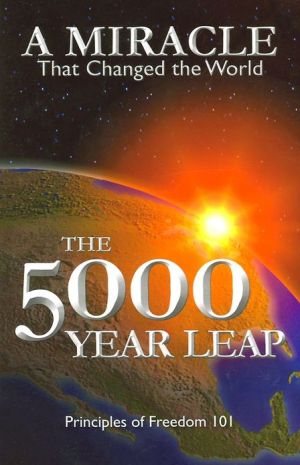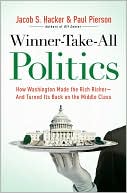The Constitution in Congress: The Federalist Period, 1789-1801
In the most thorough examination to date, David P. Currie analyzes from a legal perspective the work of the first six congresses and of the executive branch during the Federalist era, with a view to its significance for constitutional interpretation. He concludes that the original understanding of the Constitution was forged not so much in the courts as in the legislative and executive branches. Judicial review has enjoyed such success in the United States that we tend to forget that other...
Search in google:
In the most thorough examination to date, David P. Currie analyzes from a legal perspective the work of the first six congresses and of the executive branch during the Federalist era, with a view to its significance for constitutional interpretation. He concludes that the original understanding of the Constitution was forged not so much in the courts as in the legislative and executive branches, an argument of crucial importance for scholars in constitutional law, history, and government."A joy to read."—Appellate Practive Journal and Update"[A] patient and exemplary analysis of the work of the first six Congresses."—Geoffrey Marshall, Times Literary Supplement Rogers M. Smith David Currie is a distinguished scholar at the University of Chicago Law School who, having written two volumes on "The Constitution in the Supreme Court," has now turned to the less discussed topic of what Congress has made of the Constitution. The initial result is this useful and reasonably sprightly reference work covering the debates of the first six Congresses. Currie's method is simple. He has gone through the Annals of Congress and other sources detailing congressional discussions during these years and organized them topically, with special attention to constitutional issues. His text then summarizes what they said, interspersed with commentary comparing and contrasting their various views with those expressed in later, kindred constitutional controversies, particularly later Supreme Court decisions. This endeavor has two chief virtues. First and foremost, as Currie contends, he provides abundant evidence that Congress (and the President) have generated much of what we properly regard as constitutional law, often on "constitutional issues of the first importance" that "have never been resolved by judges" (p. x). Making a working government out of the skeletal constitutional sketch required innumerable decisions on the rules for conducting business in each house, their relations with the President and other executive officials, their powers to review the conduct of elections and the apportionment of representatives, their authority to structure the judiciary, to define who was a citizen, and much more. Many of their judgments have become so thoroughly embedded in our conceptions of the basic prerogatives and duties of the different branches of government that their often controversial congressional origins have been obscured. Currie does a service in bringing this history into fuller view. Second, Currie's very willingness to read congressional debates and take them seriously is refreshing. Except for some valuable but sometimes deracinating "content analysis" studies, political scientists rarely read congressional debates carefully, regarding them mostly as politically motivated hot air. This is all the more true when we turn to recent history, since members of congress now have ample opportunity to insert ersatz, sanitized versions of their spoken (or never spoken) remarks into the Congressional Record. Yet in all periods, what they include is often still politically revealing: statements that may seem innocuous in discussions of economic rights, state power, race, gender, foreign policy during a certain period, or from "mainstream" perspectives, may for that very reason tell us most about the often vulnerable political premises then prevailing. Currie's summaries of the early congressional debates provide many such examples. Both these strengths of the book are, however, accompanied by limitations. Although Currie gives lots of examples of members of congress engaging in constitutional reflections, he does not himself reflect on this activity. He views constitutional interpretation in Congress as pretty much like constitutional interpretation by courts. It involves the same methods and is to be judged by the same standards. Indeed, apart from his recounting of what they said, the bulk of Currie's own contribution here is to list the later Supreme Court decisions on the same points the early representatives discussed and to suggest briefly who he thinks did a better job of making sense of the text. Perhaps that's all there is to do; but one might at least question whether that is so. Keith Whittington's forthcoming work suggests, for example, that when Congress interprets the Constitution, it is necessarily less concerned than courts with discerning established limits on power, and more concerned with "constructing" what can be done within the document's broad outlines. That different task may lead to different constitutional understandings. Whether those claims are correct or not, the issue of what it means for the Constitution to be interpreted "in Congress" might have received more consideration in a work devoted to that topic. Furthermore, in his commendable effort to be both comprehensive and concise, Currie ends up giving such brief snippets of what members of congress said on various topics that we miss a good deal of the substance and a great deal of the flavor of their thinking. These debates include some wonderful oratory, but little of it is quoted here. Currie also centers his discussion on what Congress said on constitutional issues that contributed "to the development of legal doctrine" (p. x). But he construes even that deliberately, and understandably, limited task rather more narrowly than he might. To mention some examples drawn from my own work with these records: in an early House debate over whether to seat William Smith of South Carolina, an expatriate during the Revolution, James Madison laid out a rather extraordinary theory of "natural" citizenship, at apparent odds with much revolutionary thought and some judicial rulings; but Currie does not report, much less analyze, that theory's content. Smith then went on to protest elaborately when the House entertained antislavery petitions. He invoked Jefferson's discussion of blacks in Notes on the State of Virginia and characterized blacks in ways that tell much about early American racial thinking, including thought on the appropriate legal status of free blacks. But Currie simply reports that deep south representatives "began to squeal like stuck pigs" when the petitions were introduced and that Smith was concerned that emancipation might be ex post facto legislation (p. 66). Currie also notes without comment or analysis the choice of the first Congress to confine naturalization to "whites," a decision of profound constitutive, if not constitutional, significance, with which courts would eventually have to wrestle mightily. More surprisingly, Currie even has little to say about whether Congress really did intend in the Judiciary Act of 1789 to give the Court original jurisdiction to issue writs of mandamus. Later, the views concerning foreigners aired in the debates over whether to seat Albert Gallatin in the Senate and the passage of the Alien and Sedition Acts are also given short shrift. At many points, then, larger issues raised in these exchanges are not highlighted, sometimes not even acknowledged. But as the "stuck pigs" line suggests, this book does contain many breezy asides commenting on the wisdom and folly of American politicos and judges, past and present. These quips often make for amusing reading, even when the reader disagrees with Currie's pithy appraisals. Nonetheless, this is a scholar's reference book, not a work for a general reader and not suited to be a primary classroom text. It will help us all find out quickly what the early Congresses said on any number of issues and whether the Supreme Court subsequently agreed, and that is valuable. We can then, I trust, go on to analyze the significance of such debates for American politics and constitutionalism in many ways that will go beyond what Currie tried to do, or perhaps could hope to do, in this book.
PrefaceAbbreviations and Shortened TitlesPart One: The First Congress, 1789-1791Introduction to Part One1. The New GovernmentI. CongressA. RulesB. RecordsC. OfficersD. OathsE. InstructionsF. QualificationsG. ElectionsH. EnumerationI. InvestigationII. The Special Role of the SenateA. The French Consular ConventionB. The Fishbourn AffairC. The Southern IndiansD. The Fort Harmar TreatiesIII. The Executive BranchA. The President's Role in LegislationB. Emoluments and TitlesC. The Department of Foreign AffairsD. Other OfficersIV. The CourtsA. The Lower Federal CourtsB. The Supreme Court2. Substantive Legislation1. Taxes and TradeA. Tariffs and TonnageB. WhiskeyC. Ship LicensingD. Inspection LawsE. SeamenF. The Slave TradeII. SpendingA. AppropriationsB. LighthousesC. Other Spending ProposalsIII. The Public CreditA. Paper MoneyB. The Question of Full PaymentC. The Assumption of State DebtsIV. The Bank of the United StatesV. Military, Indian, and Foreign AffairsA. SoldiersB. IndiansC. PiratesVI. MiscellanyA. NaturalizationB. Patents and CopyrightsC. CrimesD. StatesE. TerritoriesF. The Seat of GovernmentVII. The Bill of RightsConclusion to Part OnePart Two: The Federalists, 1791-1801Introduction to Part Two3. The Second Congress, 1791-1793I. CongressII. The PresidentA. The Electoral CollegeB. SuccessionC. Special ElectionsIII. The Post OfficeA.DelegationB. Federalism and Other ProblemsIV. The MintV. The CourtsVI. The MilitiaA. OrganizationB. EmploymentVII. The ArmyVIII. The TreasuryIX. CodfishX. FugitivesXI. Summary4. The Third Congress, 1793-1795I. NeutralityA. The ProclamationB. The AftermathII. DefenseA. The Scope of Federal AuthorityB. The President and CongressIII. St. DomingoIV. InsurrectionV. CitizenshipVI. The Eleventh AmendmentVII. The District of New HampshireVIII. The Southwest DelegateIX. The Flag5. The Fourth Congress, 1795-1797I. The Jay TreatyA. Negotiation and ApprovalB. The Role of the HouseII. TennesseeIII. Congressional PowersA. Spending—AgainB. Direct TaxesC. Perils of the DeepD. Kidnapping and the Right to PetitionIV. Randall and Whitney6. The Fifth and Sixth Congresses, 1797-1801I. Troubles with FranceA. Declaring the PeaceB. The Provisional ArmyC. VolunteersD. The French TreatiesII. The Enemy WithinA. AliensB. SeditionC. The Expulsion of Matthew LyonD. The Cases of Duane and RandolphE. All's Well That Ends WellIII. Odds and EndsA. The Impeachment of Senator BlountB. Mr. Pinckney's GiftsC. The Mississippi TerritoryD. The District of ColumbiaIV. The Election of 1800A. The Grand CommitteeB. Mr. Bayard's ConscienceConclusionAppendix: The Constitution of the United StatesIndex
\ Rogers M. SmithDavid Currie is a distinguished scholar at the University of Chicago Law School who, having written two volumes on "The Constitution in the Supreme Court," has now turned to the less discussed topic of what Congress has made of the Constitution. The initial result is this useful and reasonably sprightly reference work covering the debates of the first six Congresses. Currie's method is simple. He has gone through the Annals of Congress and other sources detailing congressional discussions during these years and organized them topically, with special attention to constitutional issues. His text then summarizes what they said, interspersed with commentary comparing and contrasting their various views with those expressed in later, kindred constitutional controversies, particularly later Supreme Court decisions. This endeavor has two chief virtues. First and foremost, as Currie contends, he provides abundant evidence that Congress (and the President) have generated much of what we properly regard as constitutional law, often on "constitutional issues of the first importance" that "have never been resolved by judges" (p. x). Making a working government out of the skeletal constitutional sketch required innumerable decisions on the rules for conducting business in each house, their relations with the President and other executive officials, their powers to review the conduct of elections and the apportionment of representatives, their authority to structure the judiciary, to define who was a citizen, and much more. Many of their judgments have become so thoroughly embedded in our conceptions of the basic prerogatives and duties of the different branches of government that their often controversial congressional origins have been obscured. Currie does a service in bringing this history into fuller view. Second, Currie's very willingness to read congressional debates and take them seriously is refreshing. Except for some valuable but sometimes deracinating "content analysis" studies, political scientists rarely read congressional debates carefully, regarding them mostly as politically motivated hot air. This is all the more true when we turn to recent history, since members of congress now have ample opportunity to insert ersatz, sanitized versions of their spoken (or never spoken) remarks into the Congressional Record. Yet in all periods, what they include is often still politically revealing: statements that may seem innocuous in discussions of economic rights, state power, race, gender, foreign policy during a certain period, or from "mainstream" perspectives, may for that very reason tell us most about the often vulnerable political premises then prevailing. Currie's summaries of the early congressional debates provide many such examples. Both these strengths of the book are, however, accompanied by limitations. Although Currie gives lots of examples of members of congress engaging in constitutional reflections, he does not himself reflect on this activity. He views constitutional interpretation in Congress as pretty much like constitutional interpretation by courts. It involves the same methods and is to be judged by the same standards. Indeed, apart from his recounting of what they said, the bulk of Currie's own contribution here is to list the later Supreme Court decisions on the same points the early representatives discussed and to suggest briefly who he thinks did a better job of making sense of the text. Perhaps that's all there is to do; but one might at least question whether that is so. Keith Whittington's forthcoming work suggests, for example, that when Congress interprets the Constitution, it is necessarily less concerned than courts with discerning established limits on power, and more concerned with "constructing" what can be done within the document's broad outlines. That different task may lead to different constitutional understandings. Whether those claims are correct or not, the issue of what it means for the Constitution to be interpreted "in Congress" might have received more consideration in a work devoted to that topic. Furthermore, in his commendable effort to be both comprehensive and concise, Currie ends up giving such brief snippets of what members of congress said on various topics that we miss a good deal of the substance and a great deal of the flavor of their thinking. These debates include some wonderful oratory, but little of it is quoted here. Currie also centers his discussion on what Congress said on constitutional issues that contributed "to the development of legal doctrine" (p. x). But he construes even that deliberately, and understandably, limited task rather more narrowly than he might. To mention some examples drawn from my own work with these records: in an early House debate over whether to seat William Smith of South Carolina, an expatriate during the Revolution, James Madison laid out a rather extraordinary theory of "natural" citizenship, at apparent odds with much revolutionary thought and some judicial rulings; but Currie does not report, much less analyze, that theory's content. Smith then went on to protest elaborately when the House entertained antislavery petitions. He invoked Jefferson's discussion of blacks in Notes on the State of Virginia and characterized blacks in ways that tell much about early American racial thinking, including thought on the appropriate legal status of free blacks. But Currie simply reports that deep south representatives "began to squeal like stuck pigs" when the petitions were introduced and that Smith was concerned that emancipation might be ex post facto legislation (p. 66). Currie also notes without comment or analysis the choice of the first Congress to confine naturalization to "whites," a decision of profound constitutive, if not constitutional, significance, with which courts would eventually have to wrestle mightily. More surprisingly, Currie even has little to say about whether Congress really did intend in the Judiciary Act of 1789 to give the Court original jurisdiction to issue writs of mandamus. Later, the views concerning foreigners aired in the debates over whether to seat Albert Gallatin in the Senate and the passage of the Alien and Sedition Acts are also given short shrift. At many points, then, larger issues raised in these exchanges are not highlighted, sometimes not even acknowledged. But as the "stuck pigs" line suggests, this book does contain many breezy asides commenting on the wisdom and folly of American politicos and judges, past and present. These quips often make for amusing reading, even when the reader disagrees with Currie's pithy appraisals. Nonetheless, this is a scholar's reference book, not a work for a general reader and not suited to be a primary classroom text. It will help us all find out quickly what the early Congresses said on any number of issues and whether the Supreme Court subsequently agreed, and that is valuable. We can then, I trust, go on to analyze the significance of such debates for American politics and constitutionalism in many ways that will go beyond what Currie tried to do, or perhaps could hope to do, in this book.\ \
